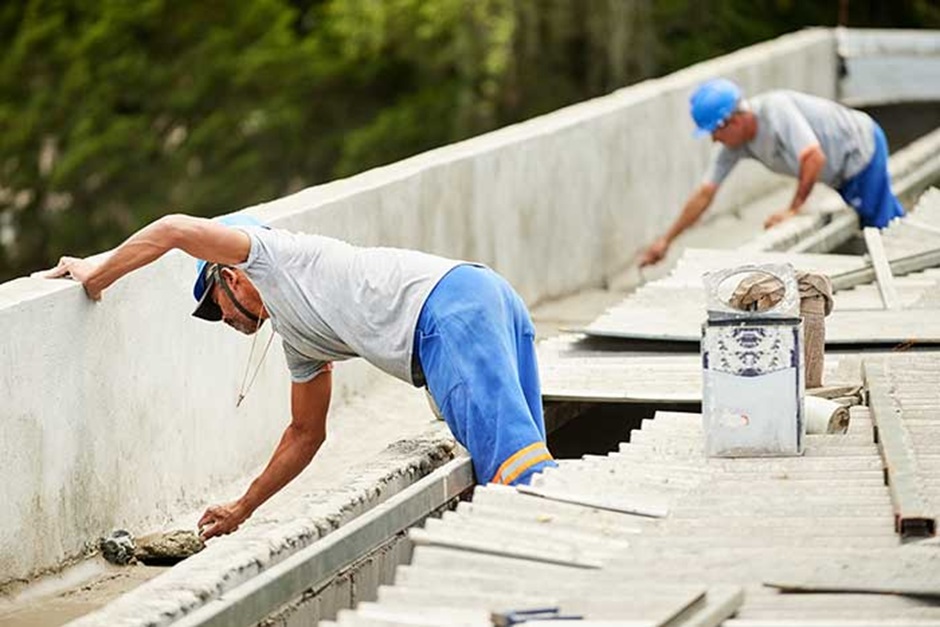Maintaining the structural integrity and safety of commercial buildings requires diligent attention to various components, including the roofing system and chimneys. Proper maintenance and timely upgrades are essential to prevent costly repairs and ensure the longevity of these critical elements. This guide provides an in-depth look at commercial roofing solutions and chimney relining, offering valuable insights for property managers and business owners.
Commercial Roofing Solutions
Commercial roofing is a vital aspect of building management, serving as the primary defense against environmental elements. Effective commercial roofing solutions involve not only selecting the right materials but also ensuring proper installation and regular maintenance. Here’s a closer look at key considerations for maintaining and upgrading commercial roofs:
1. Types of Commercial Roofing Systems
Understanding the types of commercial roofing systems available can help in making an informed decision based on building requirements and budget:
- Built-Up Roofing (BUR): This traditional roofing method involves multiple layers of bitumen and reinforcing fabrics. BUR is known for its durability and ability to withstand harsh weather conditions.
- Modified Bitumen Roofing: An evolution of BUR, modified bitumen systems offer enhanced flexibility and resistance to extreme temperatures. They are often used in areas with significant temperature fluctuations.
- Single-Ply Roofing: Including options like TPO (Thermoplastic Olefin) and EPDM (Ethylene Propylene Diene Monomer), single-ply membranes are popular for their ease of installation and energy efficiency.
- Metal Roofing: Metal roofs, including standing seam and corrugated panels, provide excellent durability and reflectivity, making them suitable for various commercial applications.
2. Installation and Maintenance
Proper installation is crucial to the longevity of commercial roofing systems. It’s essential to hire experienced roofing contractors who understand the specific needs of commercial properties. Regular maintenance, including inspections and repairs, helps prevent leaks, structural damage, and energy loss. Key maintenance tasks include:
- Inspecting for Damage: Regular inspections identify potential issues such as cracked seams, punctures, or rust spots.
- Cleaning Gutters and Drains: Ensuring that gutters and drainage systems are free of debris prevents water buildup and potential leaks.
- Addressing Minor Repairs Promptly: Timely repairs of small issues prevent them from escalating into major problems.
3. Choosing the Right Roofing Contractor
Selecting a reputable roofing contractor is critical for ensuring high-quality work. Look for contractors with experience in commercial roofing, positive reviews, and appropriate certifications. A good contractor will provide a detailed estimate, outline the scope of work, and offer a warranty on their services.
Chimney Reline
Chimney Reline is an important aspect of maintaining a safe and efficient chimney system. Over time, the interior lining of a chimney can deteriorate, leading to potential safety hazards such as chimney fires and carbon monoxide leaks. Here’s what you need to know about chimney relining:
1. Importance of Chimney Relining
A properly installed and maintained chimney liner protects the chimney structure from heat and corrosive byproducts produced during combustion. The liner also improves the efficiency of the chimney by ensuring proper ventilation. Key benefits of chimney relining include:
- Enhanced Safety: A new liner prevents the risk of chimney fires by containing and directing heat and gases safely out of the building.
- Improved Efficiency: A well-maintained liner improves the draft of the chimney, enhancing the overall efficiency of the heating system.
- Protection Against Damage: Relining helps prevent damage to the chimney structure caused by acidic flue gases.
2. Types of Chimney Liners
Several materials are used for chimney relining, each offering different benefits:
- Stainless Steel Liners: These are highly durable and resistant to corrosion. Stainless steel liners are ideal for modern heating systems that produce high temperatures and corrosive gases.
- Clay Tile Liners: Traditional clay tile liners are effective but can be prone to cracking over time. They are often used in older chimneys.
- Cast-In-Place Liners: This method involves pouring a special mixture into the chimney to create a new liner. It provides a seamless and durable solution but can be more expensive.
3. The Relining Process
The chimney relining process involves several steps:
- Inspection: A thorough inspection is conducted to assess the condition of the existing liner and identify any damage.
- Preparation: The chimney is cleaned, and any debris or damaged sections are removed.
- Installation: The new liner is installed according to manufacturer specifications and industry standards.
- Testing: After installation, the new liner is tested to ensure it meets safety and performance requirements.
4. Regular Maintenance
Post-relining maintenance is crucial to ensure the longevity of the new liner. Regular inspections and cleanings will help maintain the effectiveness and safety of the chimney system.
Conclusion
Both commercial roofing solutions and chimney relining play integral roles in maintaining the safety and integrity of commercial buildings. By understanding the various options available and investing in regular maintenance, property managers and business owners can ensure their buildings remain secure, efficient, and in excellent condition. Prioritizing these aspects will contribute to the long-term success and durability of commercial properties.

